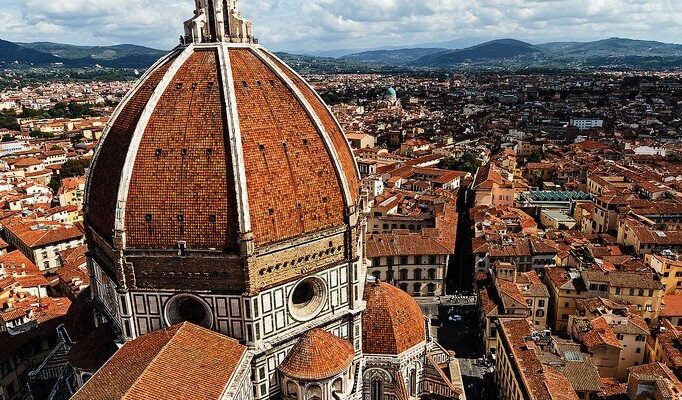Cathedral of Santa Maria del Fiore (La Cattedrale di Santa Maria del Fiore)
The Cathedral of Santa Maria del Fiore is a Florentine temple, one of the most important monuments of Italian and world architecture. The history of its construction is associated with the names of art’s iconic names – di Cambio, Giotto, Brunelleschi. Conceived as the cathedral of the city at the end of the XIII century, it was built and rebuilt until the early twentieth century. Tourists are fascinated by the ornate facade of colored Italian marble, stained glass windows, mosaics and frescoes, carved doors and bas-reliefs. Located in Piazza del Duomo, together with Giotto’s baptistery and bell tower, the Cathedral of Santa Maria del Fiore is among the monuments of the historic center of Florence protected by UNESCO.
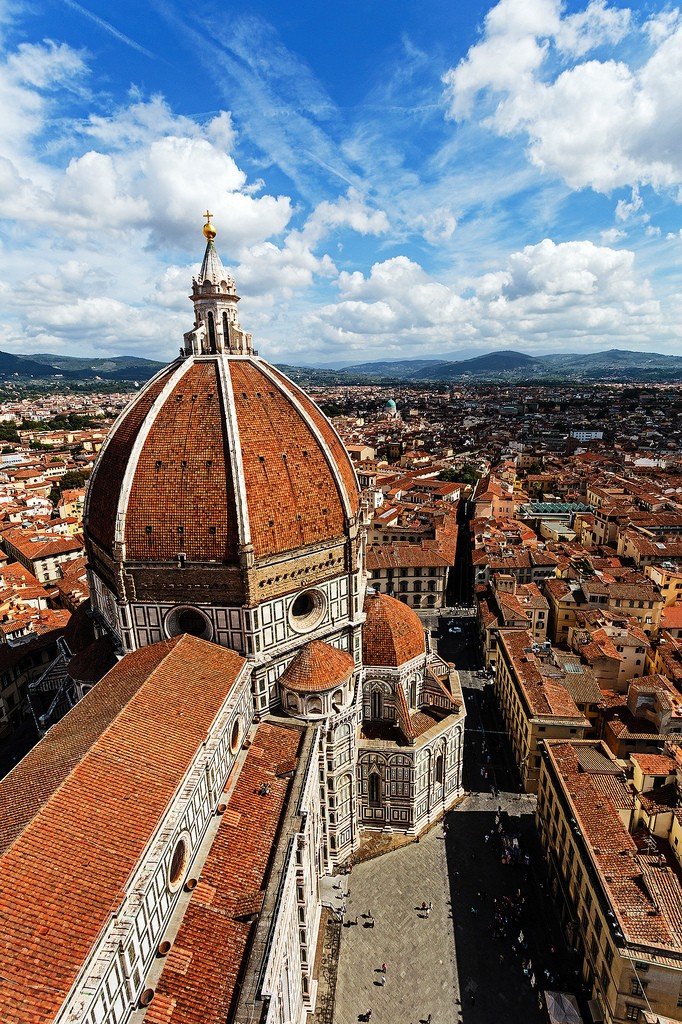
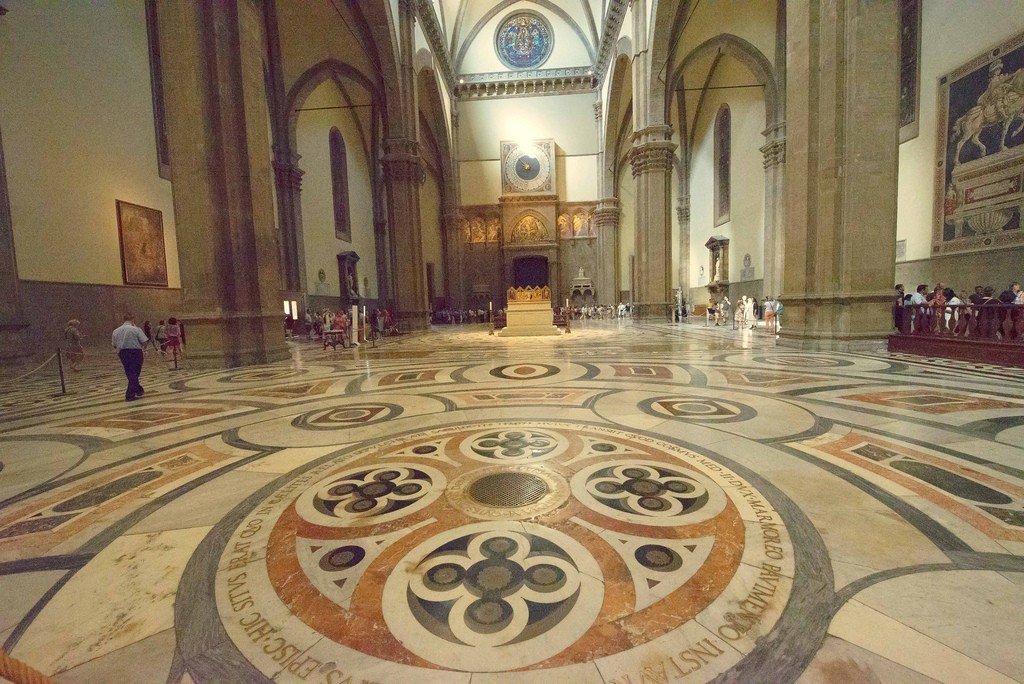
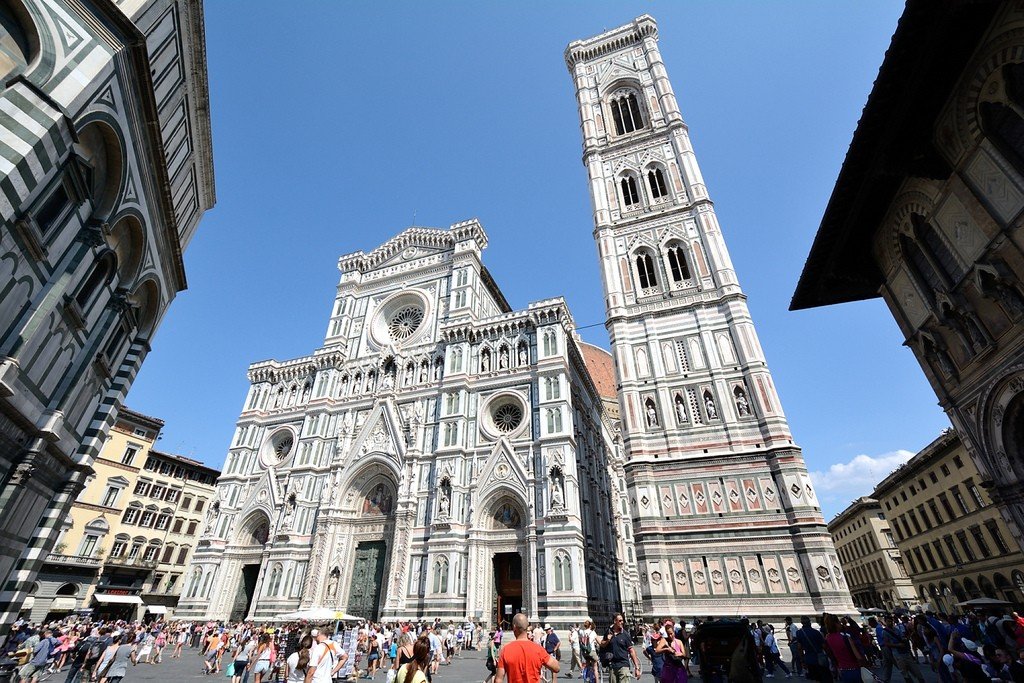
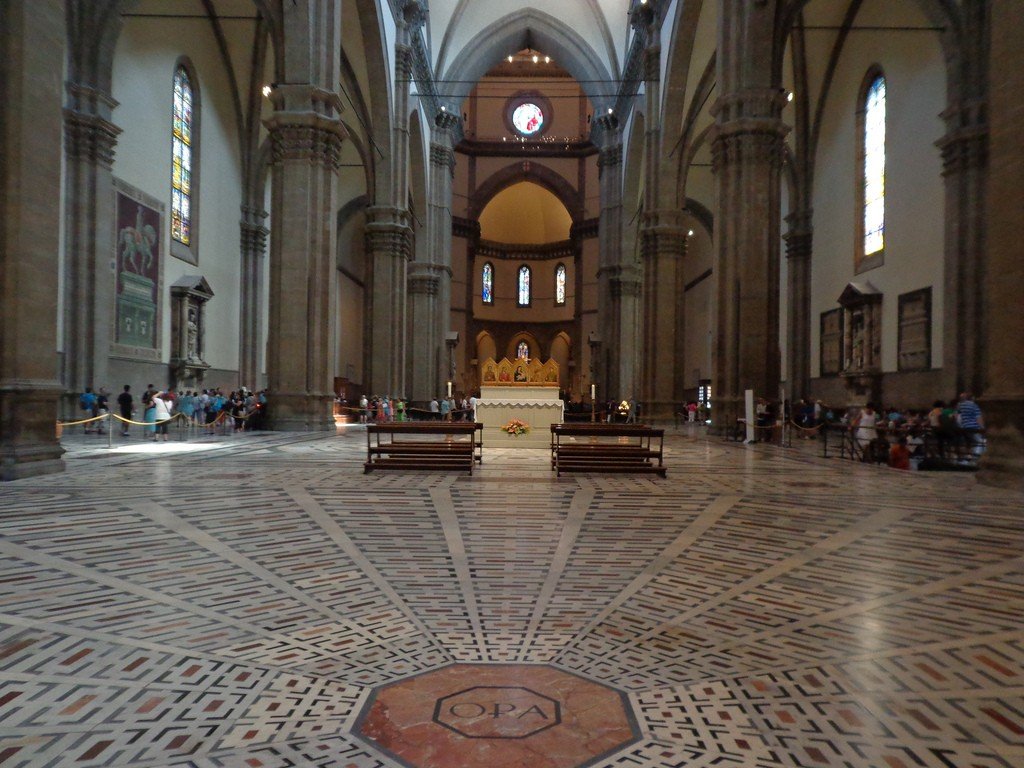
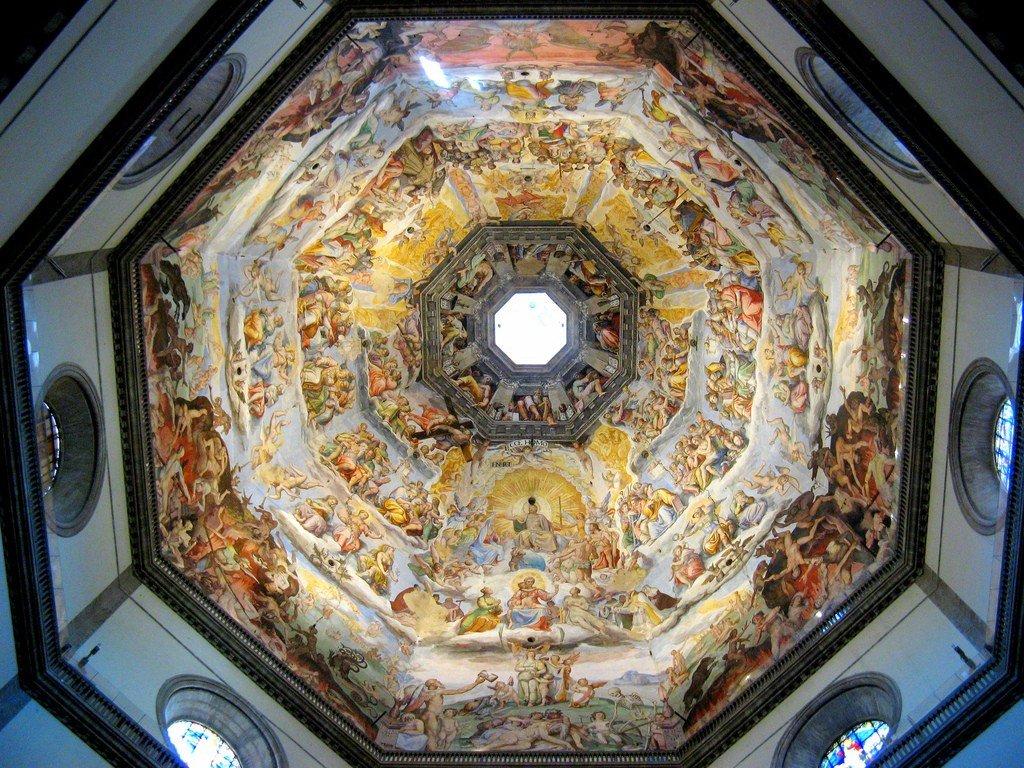
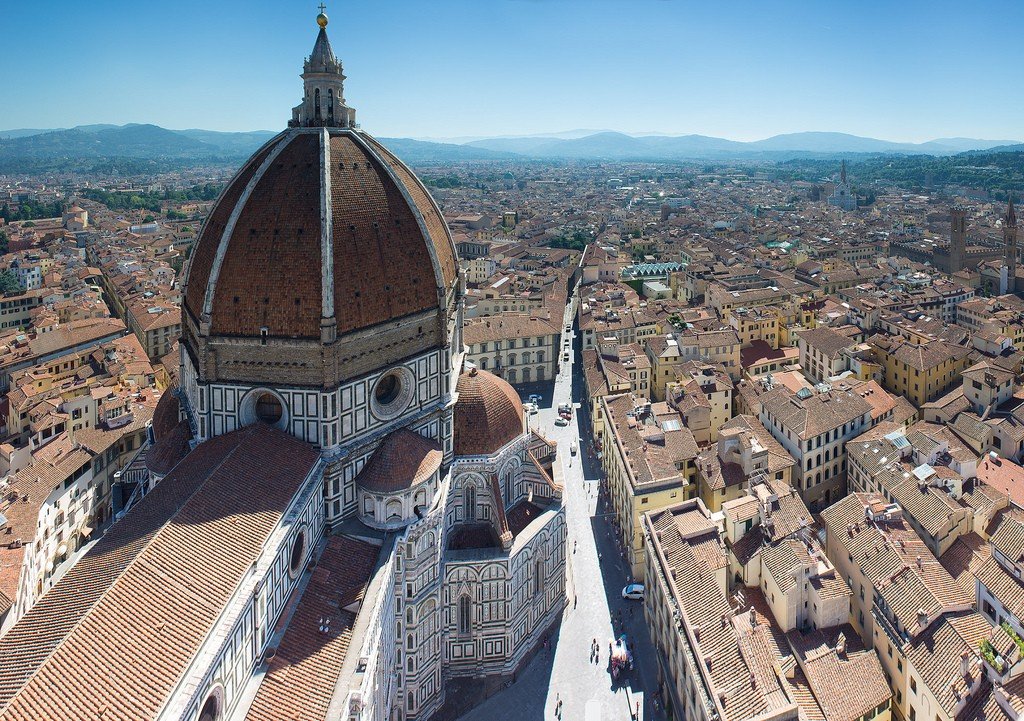
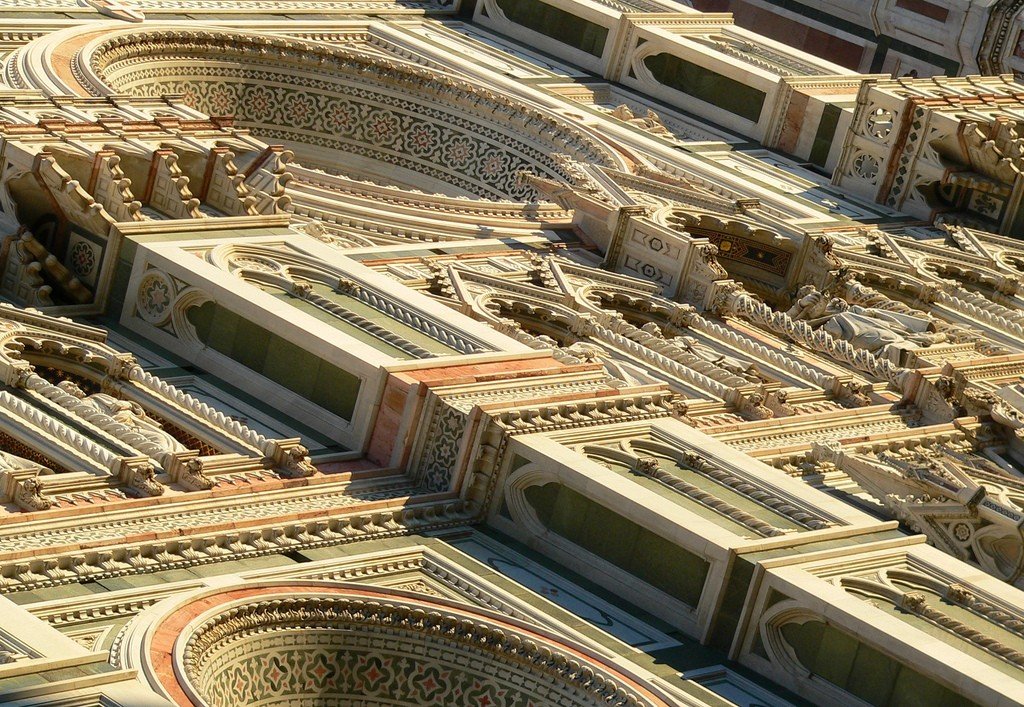
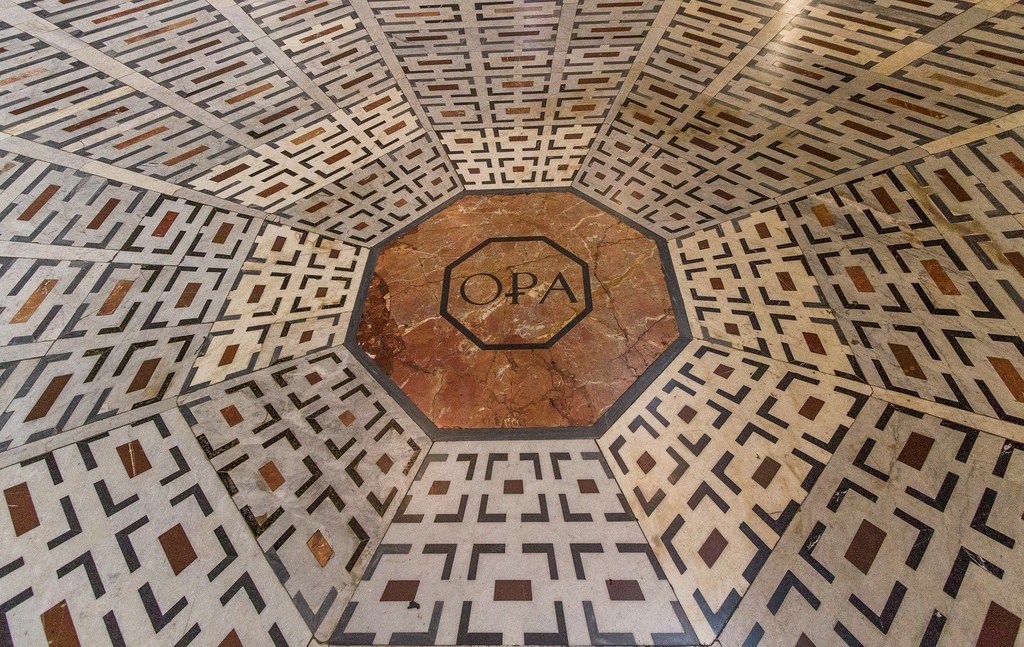
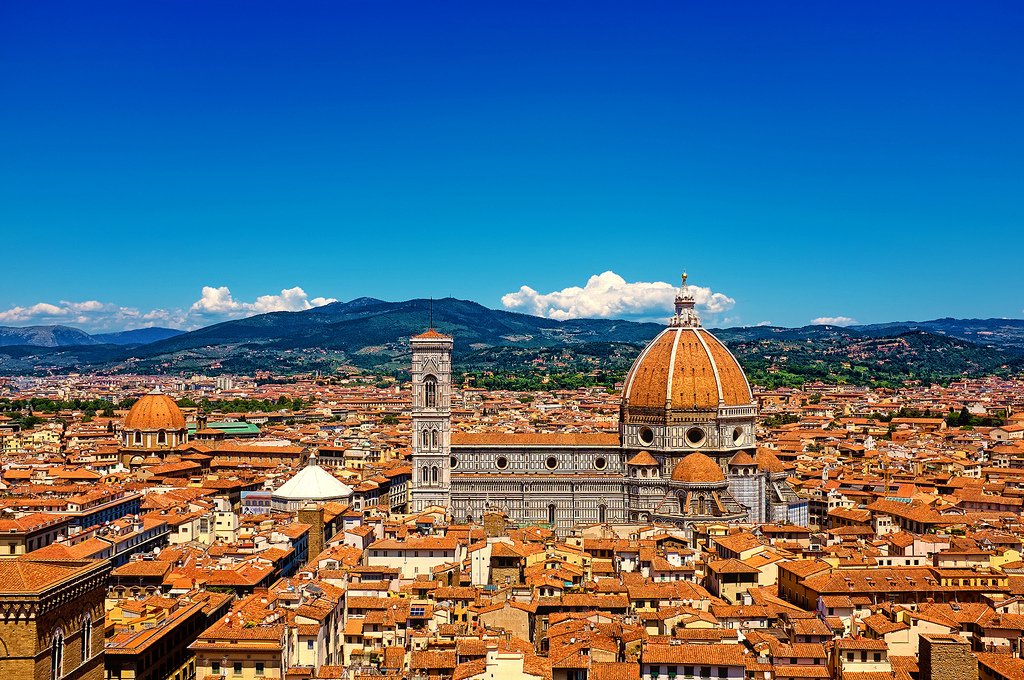
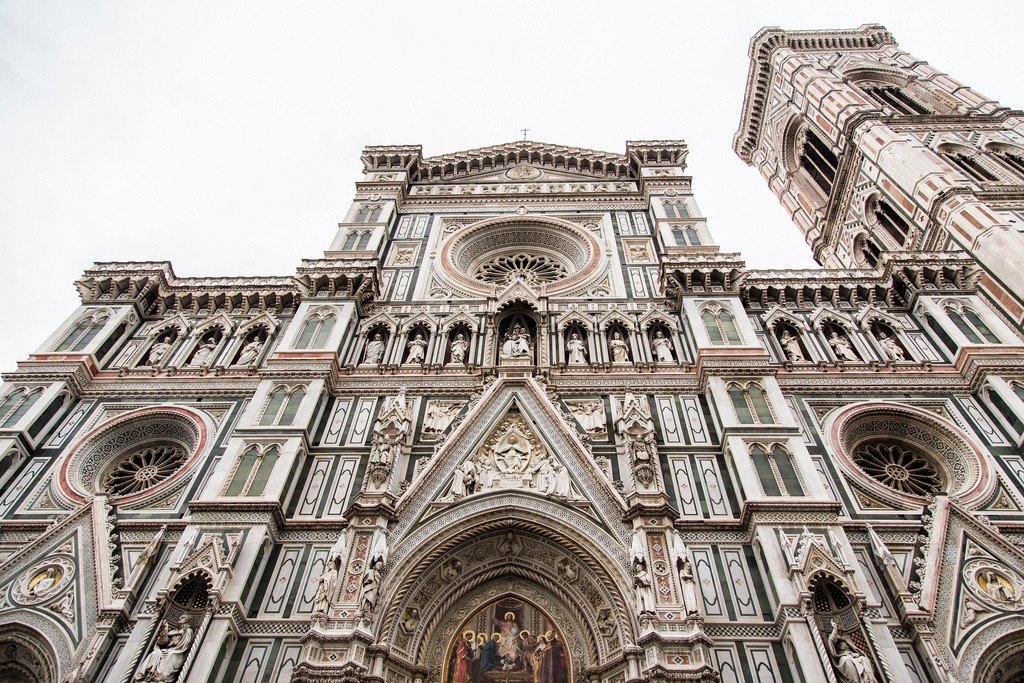
- History of the famous long-built building
- Architectural features of the Cathedral of Santa Maria del Fiore Fiore
- Interior of the cathedral
- Crypt of the cathedral
- Tourist information
- How to get there
History of the famous long building
Back in the 5th century, the church of St. Reparata, who was martyred in the 3rd century, was built on the site of the future temple. Together with St. Zinovius, the martyr became the patroness of Florence. Due to imperfect construction techniques, by the XIII century the cathedral was simply falling apart from old age, besides it could no longer accommodate all those who wished to attend the service. The same problems experienced the main cathedrals of Siena and Pisa, and in these cities began the construction of new, more capacious temples. Florence, always competing with its neighbors, immediately joined the race. The project was commissioned by Arnolfo di Cambio, who by then had already built the Basilica di Santa Croce, later adding Palazzo Vecchio, the city hall, to his masterpieces.
>The architect designed a building consisting of three naves-bays under an octagonal dome. The central nave rested on the foundation of the church of St. Reparata. The first stone of the future temple was solemnly laid by the papal envoy Valerian in 1296. Until 1310, the construction was carried out vigorously, then di Cambio died, and the pace slowed dramatically for 30 years. Santa Maria del Fiore would have suffered the fate of the cathedrals of Pisa and Siena, never completed, had it not been for a suspiciously timely discovery. In the ruins of Santa Reparata were discovered the remains of St. Zinovius, the first bishop of the city. Immediately the sponsors, a guild of wool merchants, were inspired by the miracle. They hired the already popular Giotto. In the cathedral of Santa Maria del Fiore he continued the realization of the project di Cambio, and next to it he built an unusual bell tower with bright marble facing. After Giotto’s death, the master’s ideas were realized by his assistant Andrea Pisano – until a plague pandemic swept through Europe. When the continent came to its senses after many deaths, the work was carried out by lesser-known specialists.
.
The Cathedral of Santa Maria del Fiore in the 15th century
Only by 1418 the builders had sorted out the main body – they still had to erect the dome. At the same time, the city authorities announced a competition to renovate the doors of the XII century baptistery standing next to it. Lorenzo Ghiberti won the competition, the bronze doors of the baptistery became the best in the master’s career. Along with him, Filippo Brunelleschi participated in the competition, but lost, however, he was later allowed to take on a more ambitious project – the erection of a dome over the Cathedral of Santa Maria del Fiore. Construction began in 1420. On March 25, 1436 the cathedral was consecrated by Pope Eugene IV. The date was not chosen by chance: according to the Florentine calendar until 1750, the Annunciation at the end of March was the day of the beginning of the new year.
.History of the exterior decoration and interior of the church
The facade of the building was decorated from the XV to XIX century, the floor was laid with marble tiles in the XVI century. The finishing material was taken from the best Italian deposits: white marble was brought from Carrara, green – from Prato, red – from Siena. The interiors and facades were decorated with sculptural works by Donatello and other Florentines. Paolo Uccello, Donatello, Gaddi were invited to arrange stained glass windows. Continuous construction work did not interfere with the bustling church life. In the XV century in the temple of Santa Maria del Fiore was held XVII Ecumenical Council of the Catholic Church, when Western theologians unsuccessfully tried to enter into an alliance with the Orthodox. Savonarola preached within its walls, rebels killed Lorenzo the Magnificent’s brother and nearly stabbed the Duke himself.
.Architectural features of the Cathedral of Santa Maria del Fiore
The grandeur of the Cathedral of Santa Maria del Fiore, reaching 153 meters in length, 38 meters in width, and 90 meters in the cruciform part, is astounding. The height of the arches of the building is 23 meters, the height of the cathedral together with the dome and the cross is 114.5 meters. Today’s temple is a spectacular building with rich decoration, the visual center of Florence, but contemporaries perceived it differently. Each new stage of construction was a discovery in the history of architecture. Arnolfo di Cambio achieved unprecedented size, Giotto abandoned medieval proportions and introduced the first elements of the Renaissance, Brunelleschi created a huge brick-clad dome without the use of a complex scaffolding system.
.By contrast, the nineteenth-century architects who completed the façade of Santa Maria del Fiore Cathedral sought to stay within the bounds of tradition and work in harmony with the Old Masters.
Facade and main entrance
The design of the façade is attributed to Giotto, although the decoration work actually began two centuries later. It is the collective work of several masters, among them Andrea Orcagna and Taddeo Gaddi. Construction of the entrance part of the temple was extremely slow, eventually the Tuscan Duke Francesco I ordered Bernardo Buontalenti to dismantle the finished wall altogether because it did not conform to Renaissance ideas of beauty. Some of the sculptures that originally adorned it later went to the museum behind the cathedral, some to the Berlin Museum and the Louvre. The misfortunes of the front wall did not end there: the contractors and the city authorities quarreled over money, and until the XIX century the Cathedral of Santa Maria del Fiore stood naked until Emilio de Fabris took over its design. He created a neo-Gothic facade of white, green and red marble dedicated to the Virgin Mary. Colleagues in the workshop generally approved the work, although some found the main entrance to the cathedral overly decorative.
.
In the front part of the Cathedral of Santa Maria del Fiore, visitors see three massive bronze doors by Augusto Passaglia, installed at the turn of the 19th and 20th centuries and decorated with scenes from the life of the Virgin Mary. The semicircular lunettes above the entrances are mosaicized to the design of Nicolo Barabino, a nineteenth-century religious artist. Following the Renaissance tradition, he included in the mosaic subjects not only the figures of Christ, Mary and John the Baptist, but also images of Florentine artists, patrons of the arts, scholars and merchants. A bas-relief by his contemporary Tito Sarrocca – the Virgin Mary on a throne with a scepter decorated with flowers – is on the pediment of the central door. At the top of the facade is a series of niches with the 12 apostles, centered on the Madonna and Child. At the very top of the building, between the rose window and the triangular tympanum, are busts of the great Florentine artists.
.Dome of Santa Maria del Fiore
The Cathedral of Santa Maria del Fiore went without a dome for over a hundred years from the beginning of construction. There were several reasons for the delay: a banal lack of funds, problems with materials and, finally, most importantly, no one knew how to build a dome of such magnitude that it would not collapse and kill the builders and parishioners. Gothic semi-arches, which take up some of the weight, were considered obsolete by this point. Architects wanted to achieve the simplicity and lightness of the Roman Pantheon dome, made of cement using lost technology. Brunelleschi studied the experience of antiquity, but came to the conclusion that there would not be enough wood from all of Tuscany for the scaffolding. Relying on his own intuition, he decided to use chain arches of stone and iron, deliberately holding the octagonal dome. On the inner ribs of the dome, recesses were installed for the platforms that replaced the scaffolding. The facing bricks were also laid unconventionally, herringbone, otherwise the parts would fall down until the mortar set. In total, the builders needed 4 million bricks, and the architect invented a special machine to lift them to the dome. After Brunelleschi’s death it remained to complete the finishing works. At the top of the dome was placed a copper ball from Verrocchio’s workshop. It is believed that an apprentice named Leonardo da Vinci was involved in its manufacture.
.Cathedral interior
Many elements of the decoration have been lost over time or moved to the cathedral museum, including the choir pulpits by Donatello and Luca della Robbia. Some frescoes were transferred to canvases in the 19th century to avoid loss, such as the depiction of Dante reading the Divine Comedy before Florence by Domenico di Michelino. Outstanding tomb images are placed inside the cathedral are the picturesque equestrian statues of the condottieri Niccolò Tolentino by Andrea del Castagno and John Hawkwood by Paolo Uccello. Above the main entrance is a liturgical clock by Paolo Uccello with 24 numerals on the dial.
.
The walls are decorated with 44 stained glass windows dating from the 14th to 15th centuries. One of the oldest, depicting Christ crowning Mary, by Gaddo Gaddi, is located directly above the clock. Only one stained glass window by Donatello, dedicated to the coronation of the Virgin, is visible from the nave. The dome, according to Brunelleschi’s plan, was to be covered with gilding from the inside, but then decided to save money and limit it to whitewashing. Later, its surface was painted by a team of artists, including Giorgio Vasari and Federico Zuccaro, in various techniques..
Cathedral Crypt
Extensive archaeological excavations in the 1960s and 1970s showed how the Cathedral of Santa Reparata, with its early medieval mosaic multicolored floor, and Santa Maria del Fiore successively succeeded each other. In the crypt, the cathedral’s dungeon, is the simple tomb of Filippo Brunelleschi. Besides the architect, buried in the temple are Zinovius of Florence, the first bishop of Florence, Conrad II, the medieval king of Germany and Italy, Giotto, who became the first figure of the Proto-Renaissance, and several medieval popes. Incidentally, the legend of Giotto’s burial in the cathedral has held steady since the artist’s death, but his remains have never been found, nor have the graves of Arnolfo di Cambio and Andrea Pisano. Since 1974, the crypt has been open to the public for a fee.
.Tourist information
Entrance to the Cathedral of Santa Maria del Fiore is free, through the right door of the central facade, access is open Monday through Friday from 8.30 to 19.00, Saturday from 8.30 to 17.40. In fact, the schedule is conditional, depending on the schedule of church services and the weather – in strong winds, climbing the dome is prohibited. It is recommended to check the time of the visit on the official website of the Duomo Museum. Wheelchair users can enter the cathedral from the right side of the building. All facilities: restroom, checkroom, cafe are located in the museum.
.Paid sightseeing
Visiting the dome and crypt-crypt is paid – a comprehensive ticket costs 15 euros, for children 6-11 years – 3 euros. It entitles you to see the sights of the Cathedral of Santa Maria del Fiore, the bell tower to the right of the temple, the baptistery in front of its main entrance and the museum behind it within 6 days of purchase. The ticket is valid for 48 hours from the time of admission to the first site; you cannot see the same thing twice. To climb the 463-step staircase to the dome, you must book a time in advance. If you don’t arrive on time, you can’t reschedule your visit – there are too many people who want to be at the best observation deck in Florence.
.How to get there
Finding the Cathedral of Santa Maria del Fiore is not difficult, as it is the most imposing building in the historic center of Florence. To reach it from the Santa Maria Novella train station, you need to get off at Via Panzani and then turn onto Via Cerretani. From Florence Airport to the station you can take a shuttle Volainbus, which runs from 5.30 to 0.30 (from 5.30 to 21.30 buses leave every half hour, from 20.30 to 0.30 – once an hour; travel time – about 20 minutes, the ticket costs 6 euros). If you are traveling from outlying areas of the city, you can take buses 6, 14, 17, 17, 22, 23, 36, 37, 71.
.